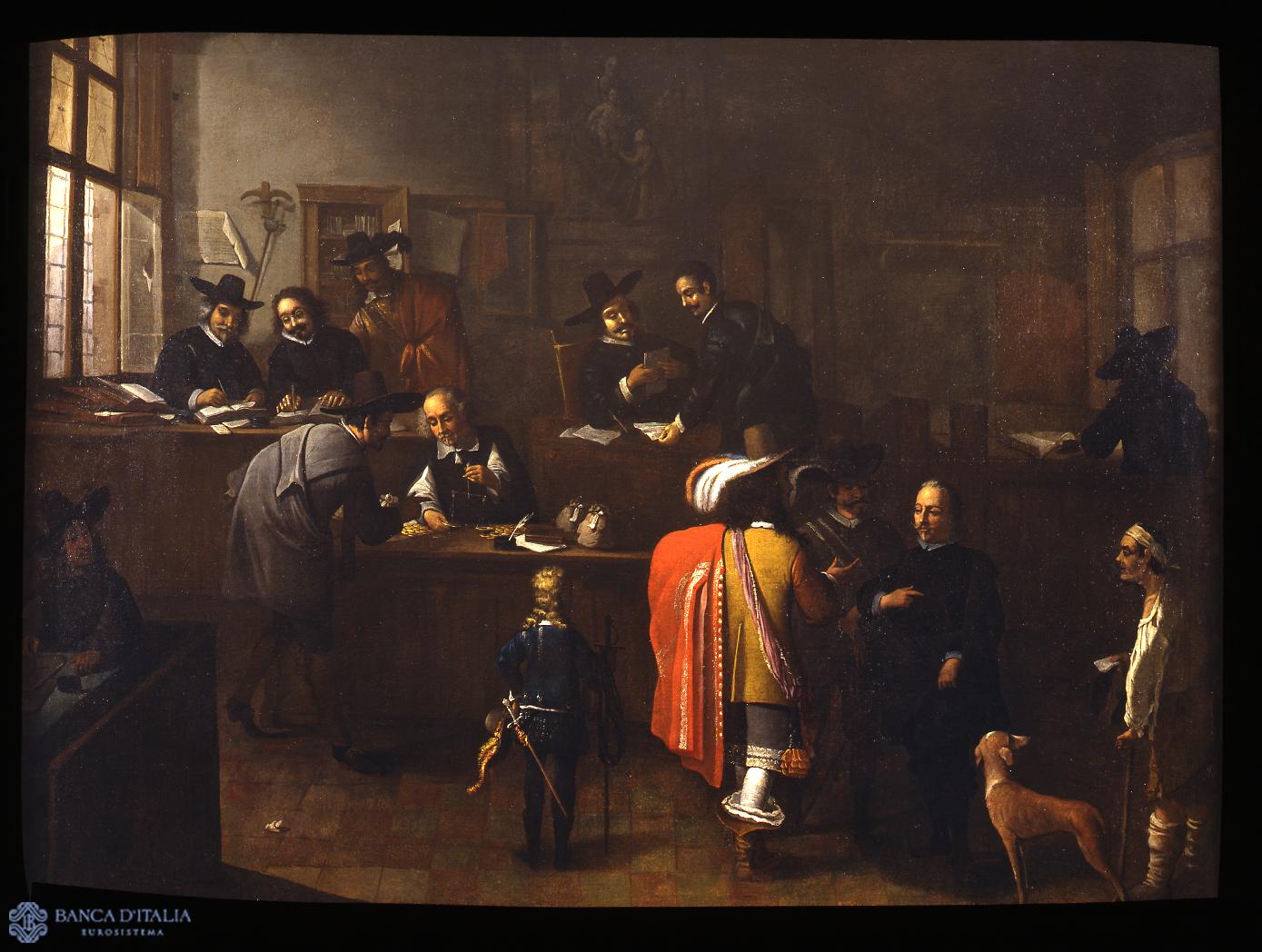Works of art
Works of art
Number of results: 282

Casa di riposo Bonacossa a Dorno Lomellin
Angelo Morbelli
A dim light filters in through two big windows on the left, enveloping seven figures in a large, plain room. The unadorned scene reproduces, as in a snapshot, a painful, lonely moment of silence for these old women, gathered in the old people’s home and portrayed, at the end of the day, in the pointless onflow of their lives.
20th century AD
Figurative
Painting

Dalla Colma
Angelo Morbelli
Morbelli came to Divisionism late. He was nearly forty, in fact, when he took part in the Milan Triennale of 1891 together with Segantini and Previati, marking the debut of Italian Divisionism. This painting is one of his later works, done between 1918 and 1919, the year of his death.
20th century AD
Landscape
Painting
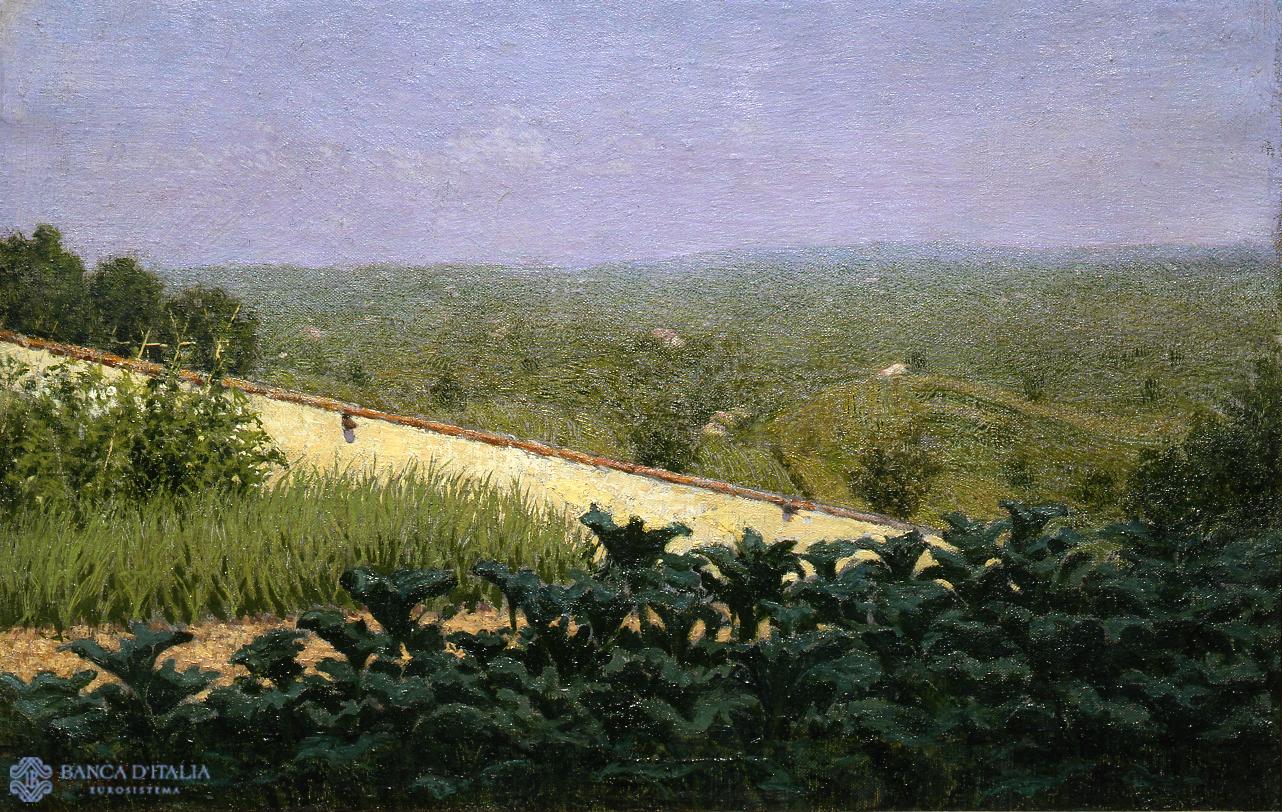
L'orto dell'artista
Angelo Morbelli
In this gossamer view opening onto a panorama that stretches to the far-distant horizon, Morbelli returns to one of his favourite themes, his beloved landscape from his country house at La Colma di Rosignano.
20th century AD
Landscape
Painting
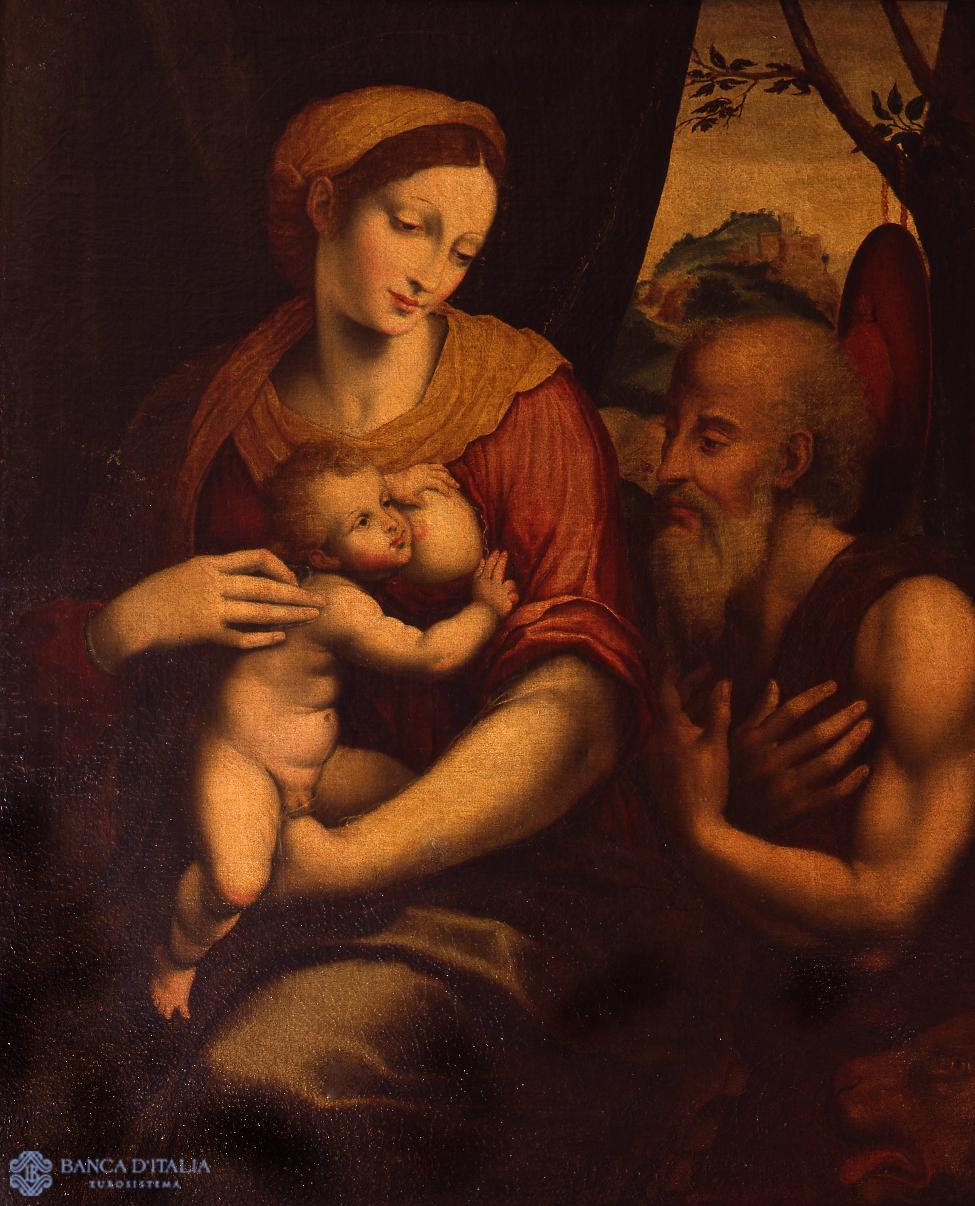
Madonna with Child and Saint Jerome
In this delicate painting the Virgin Mary turns towards St. Jerome while Baby Jesus briefly abandons the breast to bless the saint. The elderly Doctor of the Church, his arms crossed on his chest in sign of worship, is recognizable from the red Cardinal’s hat hanging from the branch of a tree.
16th century AD
Painting
Religious
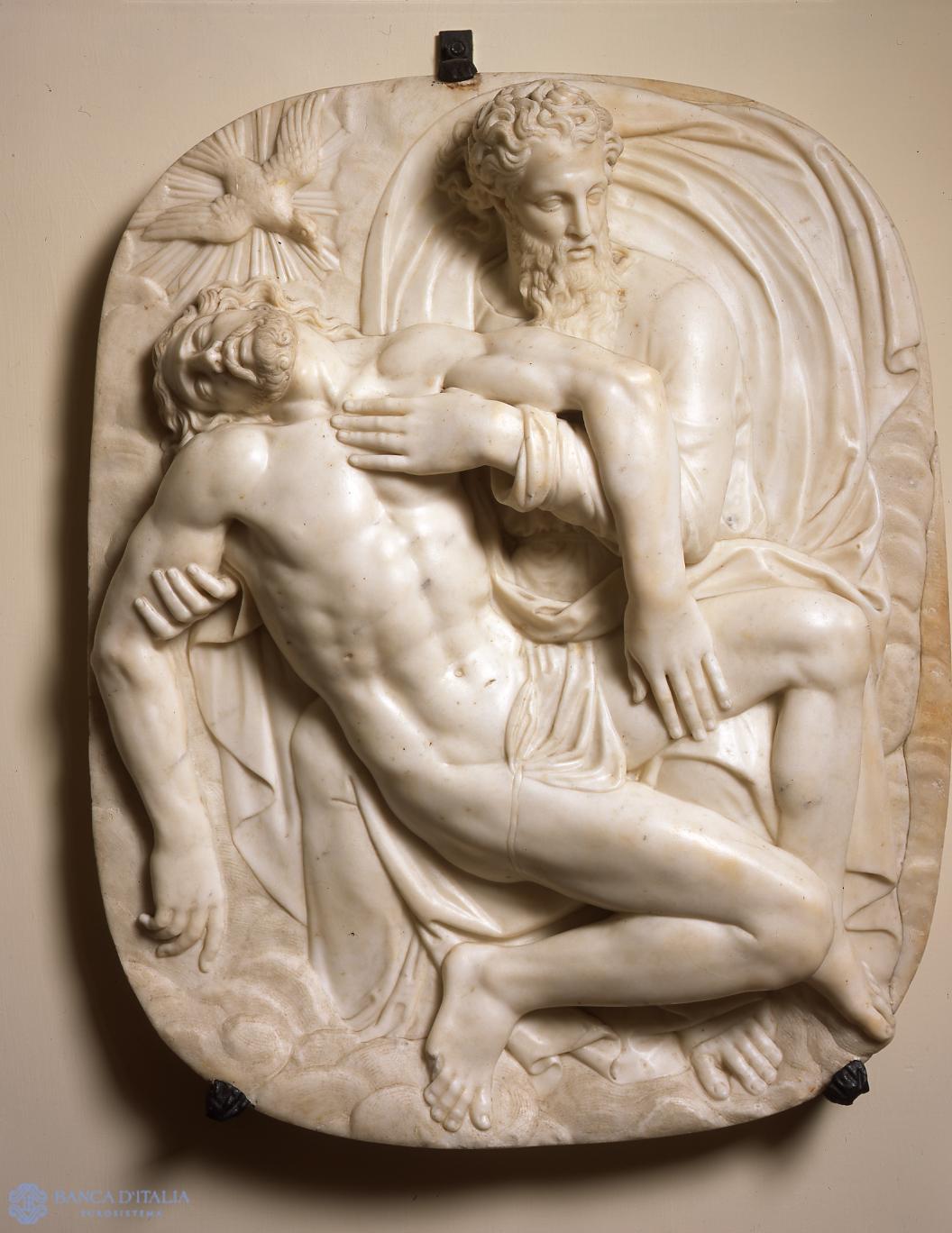
Bas-Relief Depicting the Holy Trinity
This fine marble bas-relief, on a vaguely oval-shaped panel, contains an interesting representation of the Trinity. The foreground is occupied entirely by the body of the lifeless Christ, held gently in the arms of the Father.
16th century AD
Religious
Sculpture
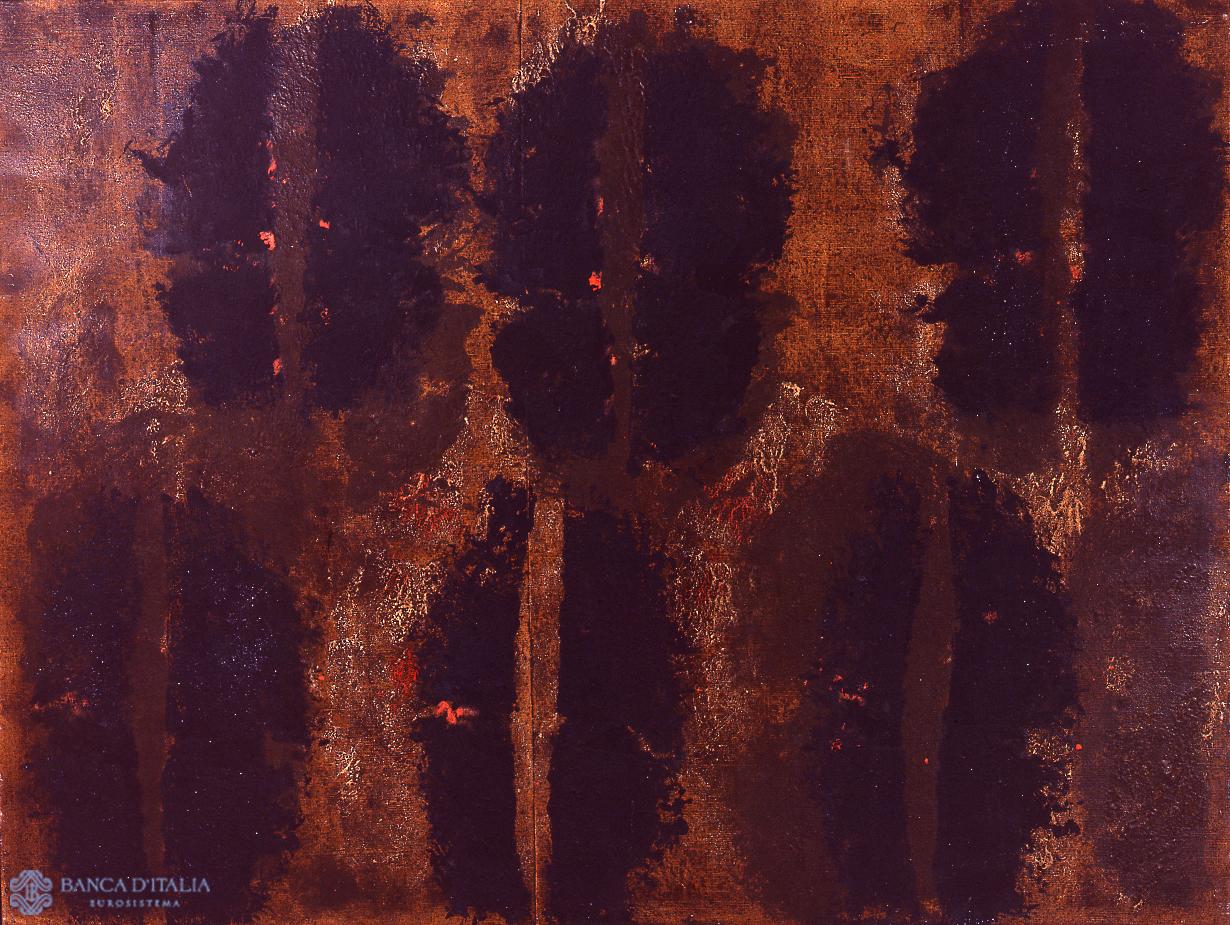
Due di febbraio
Antonio (Toti) Scialoja
On two registers, which occupy the higher and lower sections of the composition, is a series of imprints that Scialoja has made on the canvas using oiled paper, drenched in paint and then “beaten” onto the surface of the previously coloured canvas.
20th century AD
Abstract
Painting

Notturno
Antonio (Toti) Scialoja
The painting presents a brief part of the landscape, whose composition recalls the way Morandi organized this theme, around blocks of flats erected in the centre of the painting and a night sky barely revealing some more luminous hints.
20th century AD
Landscape
Painting
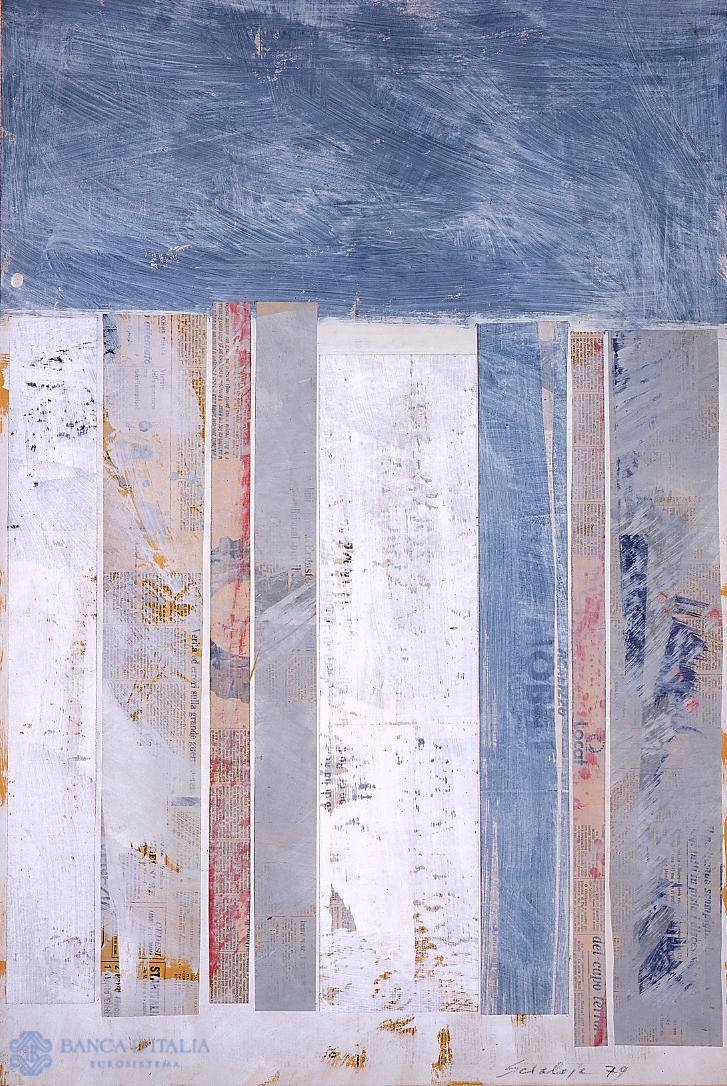
Senza titolo
Antonio (Toti) Scialoja
Long thin strips of paper, previously doused in harmonious colours (the tones employed are ochre tending to light blue and to grey), are placed in a paratactical series on the small surface area: simple geometrical “quantities”, which seem foreign to any desire to find impetus, passion, or cries from the heart – as had long been the case in Scialoja’s work.
20th century AD
Abstract
Painting

Tre sabbie
Antonio (Toti) Scialoja
Three double imprints rise vertically in the composition, saturating the space. The painting is serious, intransigent, almost hostile; the three bodies are raised on a bed of thick material binding the sand to the colour pigments using a fast-acting vinyl adhesive and appear as red and white tongues of flame arranged sequentially on the canvas.
20th century AD
Abstract
Painting

